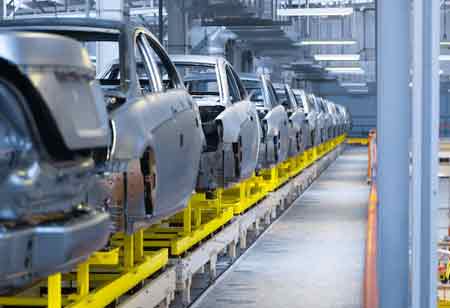Thank you for Subscribing to Auto Business Outlook Weekly Brief
Emerging Trends Shaping the Automotive Sector
Auto component brand values are increasing as demand grows for high-performing components, while brands struggling to maintain a steady semiconductor supply are losing ground.

By
Auto Business Outlook | Friday, October 03, 2025
Stay ahead of the industry with exclusive feature stories on the top companies, expert insights and the latest news delivered straight to your inbox. Subscribe today.

FREMONT, CA: The rapid advancement of electrification and connectivity in 2023 is driving significant business model transformations across the automotive sector. These changes are intensifying competition, disrupting traditional brand strategies, and creating substantial growth opportunities for both OEMs and emerging brands. New brands are gaining value at a faster pace than established players, reflecting the industry's evolving landscape shaped by shifting mobility preferences, drivetrain innovations, model variations, regulatory demands, and technological advancements. The sector is at a pivotal moment, with rising sales and brand values demonstrating its resilience. Innovation, investment, and customer demand continue to grow, fueling optimism despite ongoing challenges. The rise of EVs, which rely on different technologies and components compared to ICE vehicles, is also reshaping the priorities and focus of auto component brands.
Truck brand values have had a mixed year, with modest signs of improvement. Despite rising demand, the zero-emissions shift haunts the sector. Leading emission reductions are zero-emission, hydrogen fuel-cell, and electric battery technology will get needed, and the investment would need to be significant. Trucks have many of the same difficulties as passenger vehicle companies, including the lack of charge points, electric powertrain innovation, and the need for enhanced connectivity and driver support, but they also demand more investment. As risk-sharing and liability issues get resolved, OEMs can gradually go from driver assistance to high and full automation.
Offering zero-emissions trucks at premium rates, but costs will need to fall for broader adoption, and as with passenger vehicles, brands will differentiate on driving technology. When considering EV growth, ICE performance should get regarded. Many expect EVs to have higher lifetime mileage, survive longer, and keep their value. As more consumers pay off their cars over an extended period, financing revenue may rise. Still, it may also lower sales and increase reliance on services to make up the difference. According to Mckinsey Mobility Centre, engines, transmissions, and fuel injection systems will shrink from 26 percent of the market size (by value) in 2019 to 11 percent in 2030.
Add-ons and software subscriptions will become more crucial in tech-based business strategies. Tesla's "full self-driving" add-on costs US$10,000, but CEO Elon Musk indicates that it might eventually be worth US$100,000, more than the original car, and be paid for under a subscription basis. This form of innovation has excellent value but requires tremendous investment and ingenuity. Autonomous driving follows naturally. It's becoming evident that tiny steps will lead to autonomous driving, not moonshot expenditures like Uber, Google, and Apple, which still lack a commercial case. Emerging components, including hybrid transmissions, batteries, head-up displays, and interiors, are predicted to increase the total value, driving "stable" features.






